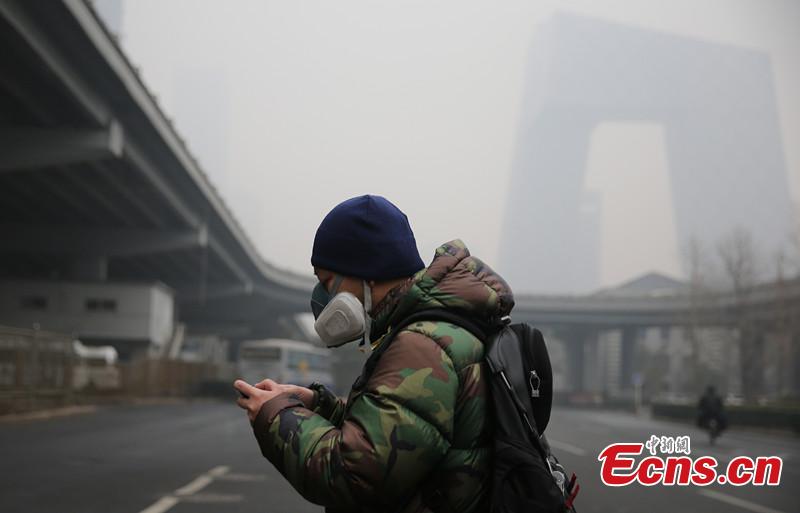Beijing prepared to lift its first ever red alert for smog Thursday, as blue skies and sunshine replaced the thick haze that covered the city for days.
The Chinese capital put its air pollution emergency plan into action earlier this week, pulling half of all private vehicles off the streets from Tuesday, ordering many factories to close and recommending that some schools allow students to remain home.
The city will end the measures midday Thursday, according to a social media post by Beijing’s environmental protection bureau.

The red alert, the highest tier of a four-colour warning system, came as heavy smog flooded the city for the second time in as many weeks.
The unprecedented move followed scathing public criticism aimed at the city’s weak response to last week’s thick haze, which saw pollution sky-rocket to levels unseen in years.
Counts of PM2.5 — harmful microscopic particles that penetrate deep into the lungs — reached well over 600 micrograms per cubic metre last week, according to the US embassy, which issues independent readings, and were regularly above 300 in recent days.
The World Health Organization’s recommended maximum exposure is 25.

The miasma came as President Xi Jinping attended a critical meeting on climate change in Paris, a potentially embarrassing coincidence that underscored China’s struggle to control the pollution that contributes to both its chronic smog and global warming.
Most of the country’s greenhouse gas emissions come from the burning of coal for electricity and heating — particularly when demand peaks in winter — which is also the key cause of smog.
The air in the capital cleared Thursday as moderate winds blew from the north, with PM 2.5 levels dropping to just 59 by mid-morning, but remained at hazardous levels in cities to the south in the neighbouring province of Hebei.

Earlier this month, China’s meteorological bureau said it expected at least one and possibly two more bouts of heavy pollution in December.
It remains unclear how Beijing will respond to future airborne smog peaks, but other cities in the region followed its lead this week, issuing their own red alerts as pollution levels climbed even higher than those seen in the capital.
